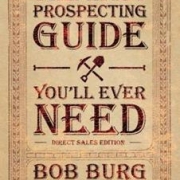“That’s Just It” Blogging for Business
“You know what descriptive writing is, The Writer’s Resource authors Day and McMahan say. “It makes you smile or sigh, brings tears to your eyes, makes you say to yourself, ‘Yes, that’s just it'” Good descriptive details are welcome in almost any kind of writing, they add. “Amen to that”, we believe at Say It For You. Blog content writing might be high-quality and informative and still not engage with readers, absent the kind of personal connection that gets prospects emotionally involved. Even in B2B marketing, there’s always a person saying “Yes, that’s just it!” who will be key to doing “a deal”.
But how is it done? You don’t need to add a slew of words to a page to achieve impact, Day and McMahan suggest, just the most specific ones. You feel terrible about something? In what way? Are you humiliated, guilty, fearful, frustrated, sickened, sad? Consult a thesaurus if you need help narrowing down the word choices to find the “That’s just it” way to express your idea, they advise. In blog content, emotional “capital” can include biographical stories showing problems solved or narrowly avoided in the course of building the business or practice and evocative descriptions of situations solved by using the product or service.
To put power into business blogs, use “close-ups” for emotional connection and impact, because it’s the details that stimulate emotional responses in readers. In fact, blog posts have a distinct advantage over more static traditional website copy precisely because of that close-up effect. And the “closer up” the focus, (and that goes for business-to-business blog writing every bit as much as B-to-C), the greater the impact. Introduce real people into the content, helping each find “That’s just it” words to convey their thoughts to readers:
- real employees delivering the product or service to the public, portraying them as real people with real lives of their own, dealing with real frustrations, but who take real pride in their work
- real business owners who overcame real hurdles to launch and to continue growing their business
- real customers who have been helped in real ways
“Advertising is ubiquitous in modern society, and while many people have some understanding of the power it wields over our everyday choices, few realize the subtle nuances of advertising that cause it to be so effective,” formationmediaco.uk writes. “The power of an advert becomes that much stronger when it is personally attached to your own daily life…Understanding how to use language in adverts is a skill in itself and you’ll know when you get it right; the customers will come flooding through the door.”
Descriptive writing with “that’s just it” words can make them smile, sigh, and hopefully – buy.






Follow us online!